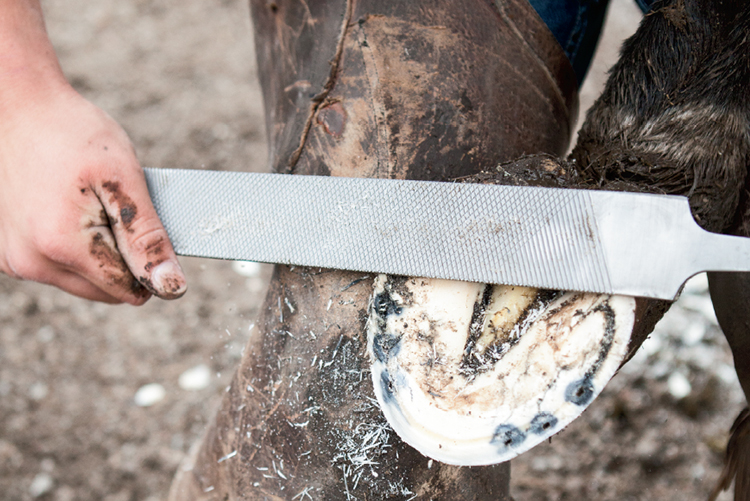Home > Arkansas > Arkansas Ag Education > Arkansas Horseshoeing School is Hoofin’ It
Arkansas Horseshoeing School is Hoofin’ It

If the shoe fits, it’s likely the work of a certified farrier. Professional horseshoers like Mack Hayden and Paul Dorris know that correct shoeing is key to the health and movement of a horse. For decades, they’ve been perfecting their craft and teaching it to aspiring farriers across the state and the region. Five years ago, Dorris opened the Arkansas Horseshoeing School because he saw a need for professional farrier education.
Hayden, a championship rider, began shoeing his own horses 30 years ago. He says that in addition to learning correct technique, a good farrier has to be able to assess the needs of the rider and the horse.
One of those considerations is terrain. “In Arkansas, a horse can be running in the mountains or the Delta, and you shoe differently depending on the ground. For instance, we leave more foot exposed for rocky terrain.”
Another factor is the horse’s “occupation” explains Hayden. “Different horses have different jobs, and it’s important to take that into consideration when you shoe them. I ask myself what does the horse do for a living. Is it a competitive horse or a trail horse? Is it in a gaited class or a barrel class? Then I shoe them accordingly,” he says.
Hayden sees firsthand the difference it makes. Not only has he had competitive success with his horses, so has his daughter, his grandchildren and many of his clients. At a recent competition, for instance, half of the horses in the gaited class were ones he had shod.
“My goal is to help each horse move better for the rider,” Hayden says. “That’s how I approach it every time I shoe a horse.”
Hayden says that to achieve that goal, you must be committed to education. “From the beginning,
I wanted to learn the best technique from the most competent people,” he says. “And even 30 years later, there’s still more to learn – new shoes, new styles, new techniques. If someone asks me for advice about becoming a farrier or becoming a better farrier, I say: ‘Go to school, go to school, go to school.’ ”

Dorris, a certified farrier for 42 years, agrees. He built a business on it through the Arkansas Horseshoeing School.
As the only horseshoeing school in Arkansas and one of just 24 in the country, Dorris is committed to passing along the skills he has been taught.
“There is a long tradition of shoeing in our family,” he says. “It’s a practice that is so important for the health and safety of the horse and the rider. We help preserve that tradition and uphold the highest standards of the profession.”
The Arkansas Horseshoeing School benefits from the expertise of Jacob Price, who Dorris calls a “tremendous journeyman” and other local farriers who lend their expertise. His father, Paul Sr., continues to teach part-time and “students consider him a treasure,” Dorris says.
The school offers several options including 8-, 12-, 16- and 24-week courses. There is rigorous academic work, as well as hands-on experience. Whether students are in anatomy class, working under a horse or are out in the field, they have expert guidance.
“We believe apprenticeship is key to success in this industry,” Dorris says. “We work to provide that kind of experience and to help students find an apprenticeship. It’s not just taking classes. It’s much more in-depth. Farriers do precision guesswork, and our job is to help them be more precise.”
That precision is key to helping animals that have skeletal issues or help compensate for growth issues. It can be instrumental in preventing certain conditions, such as nevicular disease. “The work we do helps to enhance the horse’s performance and eliminate pain and other issues,” Dorris says. “When it’s not done correctly, it can be crippling to the animal.”
He says there is plenty of work for skilled and dependable farriers. Some choose to open their own businesses or enter a multifarrier practice. Others work for universities or veterinary hospitals.
“Shoeing horses is an incredibly important aspect of the equine industry,” says Dorris. “Being committed to learning best practices and then apprenticing with a reputable farrier is the best way to help the animals and to build a successful business for yourself.”



